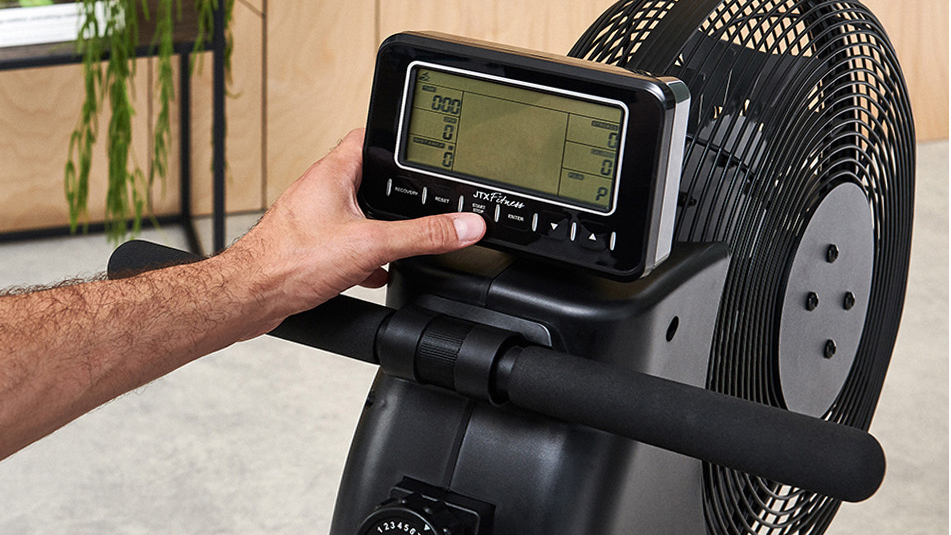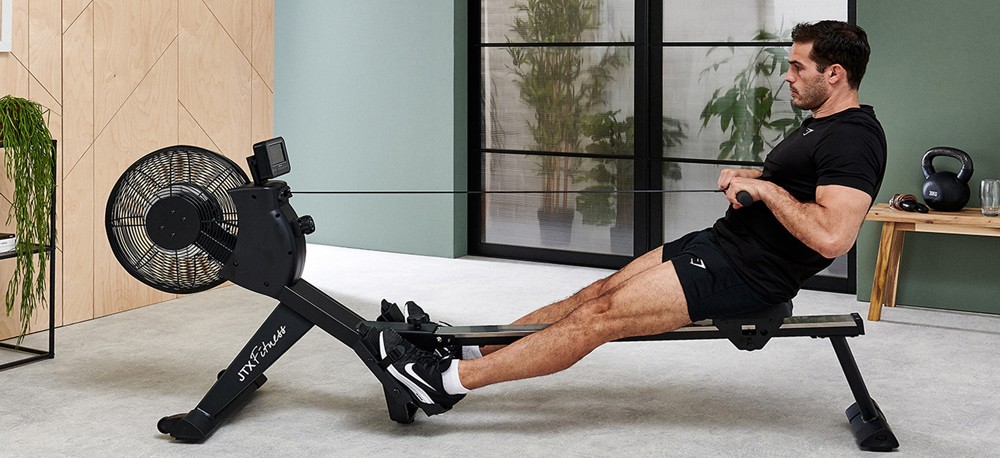Our Verdict
A solid, no-frills and affordable rower that’s great to start rowing on, although the noise can be distracting.
For
- Looks great
- Straightforward set-up
- Good value
- Self-powered
Against
- Basic workout programmes
- Highest level of resistance is a little lacking
- Noisy
You can trust Coach
If you don’t have room for a treadmill or don’t like getting on an exercise bike, rowing machines offer a home cardio fix and put more of your muscles to work than indoor running and cycling.
You certainly don’t have to spend big on the very best rowing machines either. The JLL R200+, for instance, costs less than £250 and uses magnetic resistance, but if your budget stretches to £600, the JTX Freedom Air includes a fan to add air resistance to the mix. It’s the most affordable option in JTX’s range, sitting below Ignite Air rower, which drops the magnetic resistance entirely and is a larger machine.
The Set-Up
The set-up is very straightforward and the small set of tools you need are included in the long box the rowing machine arrives in. The most challenging part is getting the fairly heavy fan in place, but the polystyrene packaging comes in handy in this regard, especially if you’re putting it together on your own which took me around an hour and 40 minutes and was easy enough. Like most indoor rowers, it doesn’t need to be plugged in, although the monitor required a couple of AA batteries.
The pedals can be adjusted to one of seven points and are wide enough to accommodate a range of foot sizes even in bulky trainers. The machine is able to handle weights of up to 135kg so it’s suitable for most people.
When you’re ready to row, grasp the handle to wake the monitor up and then you can simply hit the start button where you can view time, strokers per minute, distance in metres, total number of strokes and calories burned. If you have a Polar heart rate monitor, there’s a built-in receiver to relay that data to the monitor as well. I wore a Polar H9 chest strap and as long as you’re in close proximity to the monitor, it’ll pick up the sensor and display the data.
Below the handle is where you’ll find the resistance dial, which offers eight levels of magnetic resistance, in addition to the resistance from the fan.
The Experience
The roller under the seat moves smoothly and with minimal noise, while the seat itself has a comfortable amount of padding. While the addition of the fan makes the machine look the business and gives a feel more akin to rowing in water, where the early part of the stroke requires greater effort, it does make a lot of noise. That said, it’s a swirling, somewhat soothing noise.
The feet that are supposed to keep the machine in place didn’t do a very good job of it. I had the rower on hardwood flooring and as soon I ramped up the intensity it started to move about. In the end, I had to prop it against a box to make sure it didn’t budge.
The pedals are more secure. If you’re mixing rowing with some bodyweight exercises that require jumping quickly out of the seat, they can be a bit fiddly to unfasten, but crucially they do keep your feet locked in place when you are on it.
The monitor is pretty standard, with up and down buttons to scroll through the limited settings, but it’s a good size and is easy to read even in full flow.

Workout programmes are a bit on the basic side, letting you chase down a target distance or seeing how far you can row for a period of time. There’s also a race mode to take on the computer, which while a bit fiddly to set up does add another dimension to training.
If you’re rowing for more than half an hour, the handles can feel a little hard going on the palms. If you accidentally let go of the handles too quickly, the foam handles around them have a habit of flying off too. The Freedom Air worked well for shorter interval sessions, though.
The maximum resistance may leave those who train frequently, on a rower or otherwise, a little underserved. I run and swim up to six times a week, fitting in some gym sessions too, and while the highest resistance setting did work me hard, it maybe could’ve done with a few extra levels to let you crank things up more.
When the rowing action is over, the Freedom Air folds easily. The back lifts towards the heavier part of the frame and the wheels let you move it into a corner. It does stand tall, which will limit where you store it.
Verdict

JTX Freedom Air is a decent indoor rowing machine. Frills are limited, with the emphasis on offering a smooth, comfortable experience and a resistance range that will let you raise effort levels or take things down a notch for recovery.
It’s far away from the price of top-end rowers like Concept 2’s range (from £860, with an 11-week waiting list), which will give you more connectivity options and can be paired with apps to bolster training options. What the Freedom Air does bring is something that feels built to handle tough sessions and an attractive look. Especially that big fan up front.
If you’re getting into rowing for the first time and looking for an indoor rowing machine that will make you sweat and goes big on style too, the Freedom Air certainly fits the bill – just budget for an exercise equipment mat if you have hardwood floors.
More Rowing Machine Reviews
- Hydrow rowing machine review: The best connected rowing machine
- Echelon Row smart rower review: A slick, if expensive, connected option for beginners
- ProForm 750R rowing machine review: A more affordable way to bring connected rowing workouts home
- DKN H2Oar Water Rower review: A surprisingly smart water rower that can be stored upright

Mike is an experienced journalist, beginning his career in 2008, and is a keen runner and swimmer. As a contributor to Coach, he covers swimming and reviews rowing machines.

